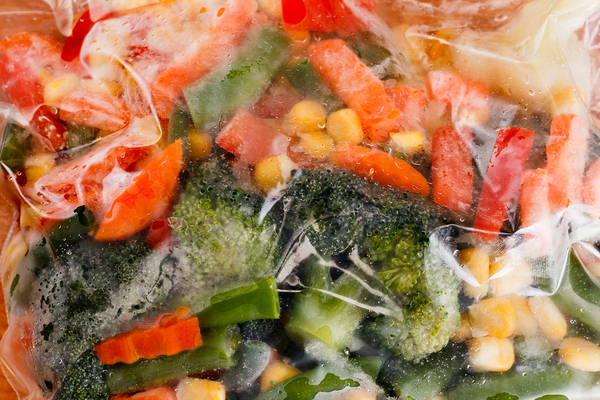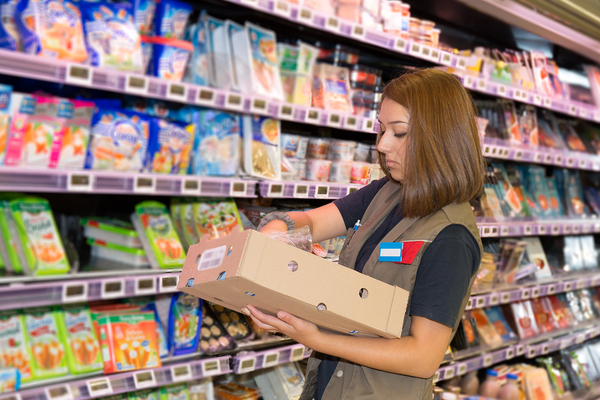Flexible food packaging designs include pouches that stand up, reclosable pouches, and other non-rigid packages. They are an alternative to rigid packaging types like plastic bottles, glass bottles, or composite canisters and can be used for liquid, solid, or powder products.

Flexible packaging is a hit with brands and consumers.
Packaging films used in flexible food packaging designs can be customized from food- to chemical-grade and offer brands tremendous scope and many brand benefits. If you are not using flexible packages, here are six reasons you should consider flexible food packaging designs.
1. Consumers Love Flexible Food Packaging Designs
Flexible food packaging designs are extraordinarily consumer-friendly. Packages that once had to be re-closed with a clip can now be easily resealed with a strong, easy-to-use zipper closure. This makes them easier to take along during commutes or road trips, and keeps snacks and other products fresher and free of outside contaminants. Flexible pouches that stand upright are especially welcome when serving snacks or measuring out ingredients for a recipe.
2. Production Costs Drop
Brands love flexible food packaging designs because they cost less to produce. Flexible packaging uses fewer, lighter materials like high-density Polyethylene, so that the same product can be delivered in less packaging than before. Additionally, flexible packaging confers longer shelf life and takes up less space on retail shelves. What is more, waste-to-energy technologies are being developed to allow safe incineration of flexible packaging to produce energy and keep them out of landfills.
3. Shipping and Transportation Costs Can Be Lower
Lighter, smaller packages for food products help reduce transportation costs. Loads may be lighter in weight for the same volume of product, and this saves on fuel costs. Greenhouse gases used to produce flexible packaging are lower than with traditional packaging, and a brand’s environmental footprint can be made smaller still due to the need to transport less mass than the same product in rigid packaging.
4. Barrier Properties Can Be Customized

The barrier properties of flexible packaging can be tailored to the product inside.
Some food products have a tendency to absorb water, and some are sensitive to the presence of oxygen. The barrier properties of flexible packaging can be customized to cope with these and other product needs. For example, laminated pouches have a low oxygen transfer rate, improving shelf stability. Custom barrier materials can be added to flexible packaging films to keep out air, moisture, odors, and microscopic substances.
5. Flexible Packaging Is Terrific for Branding Graphics
Food packaging designs offer tremendous opportunities for effective branding, and flexible packages are no exception. The materials used in flexible packaging are terrific for showing off bright, clear graphics and text, and they allow other customizations, such as a section of clear window film so consumers can actually see what is inside. There is an upfront cost for the original print plates, but this represents a branding investment that pays off in the long term.
6. Consumers Are Willing to Pay More to Get Flexible Packaging
Because consumers like the properties of flexible packaging, they are willing to pay a premium to get it. Seventy-one percent of Americans say they prefer flexible over non-flexible packaging when they have the choice, and nearly half (46 percent) are willing to pay more in order to enjoy the many benefits of flexible packaging, such as resealability, excellent food protection, and the ease of keeping products fresh.
With the development of flexible packaging, there are fewer limits on the possibilities for food packaging designs than there once were. Food brands can be confident that their products will be presented beautifully, at a lower cost, and look terrific on store shelves. They can also be confident that their customers will be pleased with flexible packaging, because consumers love benefits like the ability to reseal packages, and the convenience of pouches that stand upright on their own. With customizable barriers easy to incorporate, and materials that show off branding graphics and text beautifully, there is every reason for food brands to explore the possibilities of flexible food packaging design.
PKG Branding Design brings together the expertise of CPG branding and design, identifying the needs of our customers and helping to educate them on the most recent trends.
 |
 |


.jpg)




